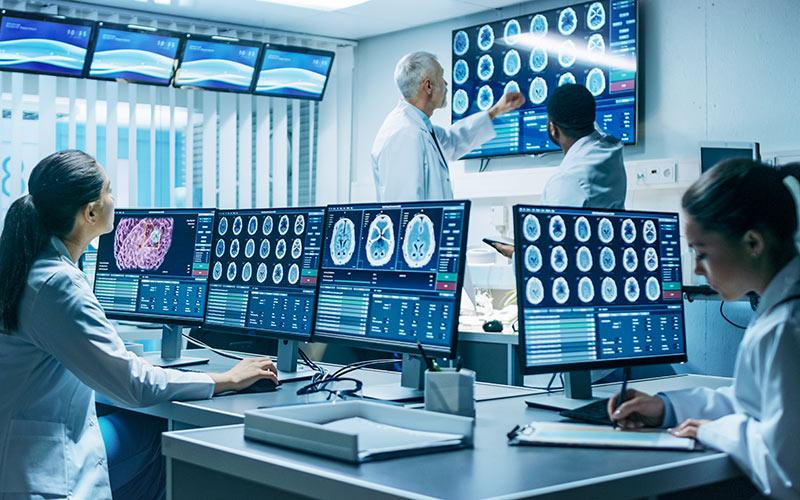By Nathalie Boudet-Gizardin, associated and Camille Faour, collaborator
The reform of nuclear medicine
The reform of nuclear medicine, which will come into force from June 1, 2023, is causing trouble among nuclear medicine groups.
Although it was well received by the National Union of Nuclear Medicine (SNMN) and hailed by the profession, the fact remains that it raises deep concerns and crystallizes a good number of questions.
What are the main lines of the reform?
After many years of discussions initiated in 2015, the reform of nuclear medicine has finally seen the light of day with the publication of two decrees of December 30, 2021 and February 1, 2022 and an order of February 1, 2022.
It follows the finding of a shortage of heavy material equipment (EML) in this area in France and testifies to a desire to ensure better quality and safety of patient care.
Nuclear medicine becomes a healthcare activity subject to authorization
The reform operates a major upheaval by making nuclear medicine one of the care activities subject to authorization by the Regional Health Agency (ARS).
Thus, nuclear medicine obeys an authorization system which no longer corresponds to that of EML but to that of care activities.
Introduced in the list of care activities, nuclear medicine activity is now defined in article R. 6123-134 of the Public Health Code as:
« the use, for diagnostic or therapeutic purposes, of a radiopharmaceutical or an active implantable medical device, in unsealed sources, emitting ionizing radiation, administered to the patient (…) ».
It includes the use of a single photon emission tomography camera (gamma camera) or positron emission tomography camera (otherwise called PET-scan) or other imaging systems.
Since then, the procedure for carrying out the activity of nuclear medicine changes : physicians in this specialty will no longer need to file EML authorization files but rather care activity authorization files.
The gradation of activity in two levels
While the activity of nuclear medicine was previously not regulated independently in the public health code, the reform now organizes a gradation of the activity of nuclear medicine at two levels, linked to the constraints inherent in the use of radiopharmaceuticals:
The "A" endorsement, when the activity includes diagnostic or therapeutic procedures excluding therapy for cancer pathologies, carried out by the administration of ready-to-use radiopharmaceuticals or prepared in accordance with the summary of product characteristics, using an aseptic process in a closed system;
The "B" endorsement, when the activity includes, in addition to the acts marked "A", the following acts:
- Diagnostic or therapeutic acts carried out by the administration of radiopharmaceutical prepared according to an aseptic process in an open system;
- Diagnostic procedures carried out within the framework of explorations of cellular labeling of the formed elements of the blood by one or more radionuclides;
- Therapeutic acts carried out by the administration of an active implantable medical device;
- Therapeutic acts for cancer pathologies carried out by the administration of radiopharmaceuticals.
The new technical conditions for installing and operating EMLs
To obtain authorization for nuclear medicine treatment in one or the other of the aforementioned mentions, the current EML license holders must fulfill, in addition to the conditions common to all nuclear medicine sites, the installation and operating conditions specific to the mention A or to mention B as the case may be.
In addition, the activity will be subject to single authorization per geographical site, on which the holder will be able to operate a maximum of three nuclear imaging devices, which will therefore no longer be subject to a prior authorization regime for EMLs but to a simple declaration to the ARS.
It will nevertheless be possible to derogate from this threshold, on a case-by-case basis, and to have a greater number of equipment in the event that the volume of procedures, the specialization of the activity or the territorial situation justifies it, after request made to the Director General of the ARS.
What are the implications of the reform for current EML license holders?
Although eagerly awaited, the reform of nuclear medicine has created a climate of anxiety for certain nuclear medicine centres, holders of EML licences, which are plagued by many uncertainties relating to the maintenance of their current authorizations and the need to restructure legally when they are constituted in the form of GCS of means or GIE.
The "re-enactment" of EML authorizations already obtained
The decree of December 30, 2021 provides, in its article 2, that holders of PET and gamma-camera authorizations, issued before June 1, 2023, must file a new request for authorization of care activity to continue their nuclear medicine activity, during the first filing window which will open on June 1, 2023.
This request will be the subject of a specific file according to the procedures set by order of the Minister responsible for health, which has yet to be published, and is obviously eagerly awaited.
Indeed, the question arises as to whether this procedure for filing a new application for authorization for a care activity could call into question the ownership of the EML authorizations already obtained by liberal structures or carrying public partnerships. /private.
Nowadays :
- there is no provision for the automatic transfer of an EML authorization already granted into a treatment authorization;
- the holders of the EML authorizations currently in force have no guarantee that they will continue after the filing of a new application for authorization for a care activity.
Applicants will be able – and this is a minimum - fortunately continue to use their EML authorizations until a decision is made on their application for authorization for a care activity.
Legal uncertainties weighing on nuclear medicine centers organized in the form of GCS, GIE or SCM
The transformation of nuclear medicine into a care activity will certainly require a legal restructuring of the GCS, GIE, and SCM, resource structures, today holders of gamma-camera and PET licenses.
The GCS of medium holders of EML
In the absence of new provisions to come, the current GCS means holding EML authorizations who wish to obtain, from June 1, 2023, an authorization for nuclear medicine treatment activities, will be forced to transform into GCS health establishments and thus be subject to the obligations inherent in this status.
It should be remembered that, pursuant to Article L. 6133-7 of the Public Health Code, the GCS holding one or more healthcare activity authorizations is set up as a healthcare establishment.
“The health cooperation group under private law is set up as a private health establishment and the health cooperation group under public law is set up as a public health establishment, by decision of the director general of the regional health agency. »
Thus, the nuclear medicine centers currently constituted in the form of GCS of means, of liberal doctors with or without health establishment, will have no choice but to transform themselves into GCS of health establishments, with all the inherent organizational constraints. to this status, in terms of certification, representation bodies, CPOM, etc.
EIGs and SCMs holding EMLs
Like the GCS, nuclear medicine centers organized in the form of GIE, or SCM (rarer), EML license holders, will not be spared by the restructuring of their activity.
Indeed, the doctrine agrees that the GIE, a structure of means, the purpose of which is to facilitate or develop the economic activity of its members, and to improve or increase the results of this activity, pursuant to Article L. 251-1 of the Commercial Code, cannot by nature carry out a care activity.
Here again, this situation will necessarily require the GIE or SCM, already holders of EML, who wish to continue their nuclear medicine activity, to transform themselves into GCS health establishments or to restructure themselves into a private practice company of doctors, authorized to carry a medical authorization.
Indeed, remember that only one or more doctors, possibly associated, a public health establishment, a legal person, public law or private law (association, foundation, mutual, congregation, commercial company, health cooperation group of article L. 6133- 7 of the Public Health Code) whose object relates in particular to the operation of a health establishment or a care activity may hold authorizations having such an object (establishment or care activity) " 1
Beyond the nuclear medicine structures made up exclusively of doctors, this change in the nature and legal regime of license holders will certainly undermine the public-private partnerships encouraged or imposed by the ARS, and sometimes formed at the end of long negotiations.
Let's hope that new texts will clarify the conditions for transforming current EML authorizations into treatment authorizations., and will provide sufficient transitional provisions to enable nuclear medicine players to comply with the new requirements of the reform.
The question remains whether the evolution of the cross-sectional imaging authorization regime, announced for early 2022, will follow the same path. AT priori no, but this remains to be confirmed when the texts are published.
1 - Maxence Cormier, Lawyer at the Paris Court of Appeal, RDSS 2020 p.484 "Ownership and use of health authorizations"

Nathalie Boudet-Gizardin
Partner
Expert in health law and regulated professions (advice and litigation), she works in various fields: structuring the activity of health professionals, advice on the regulatory and ethical aspects of their activity, defense of health actors in complex litigation, corporate health, civil and disciplinary litigation of regulated professions.




